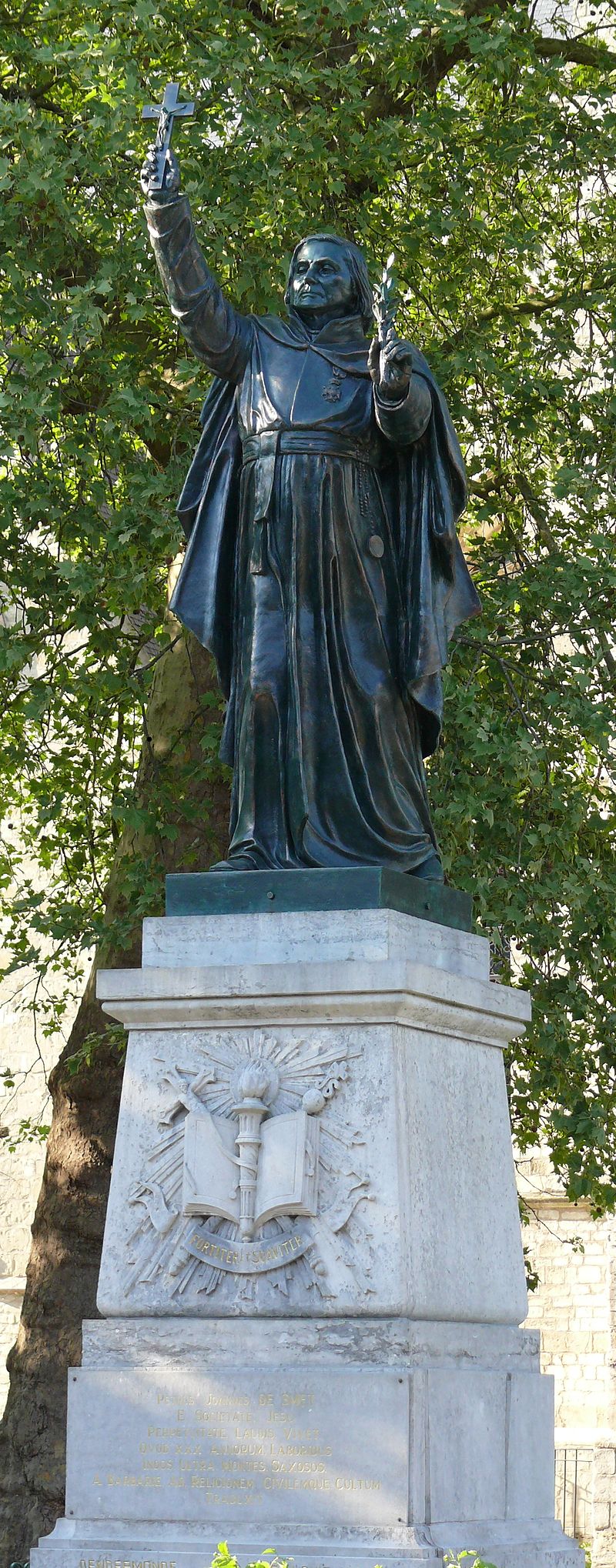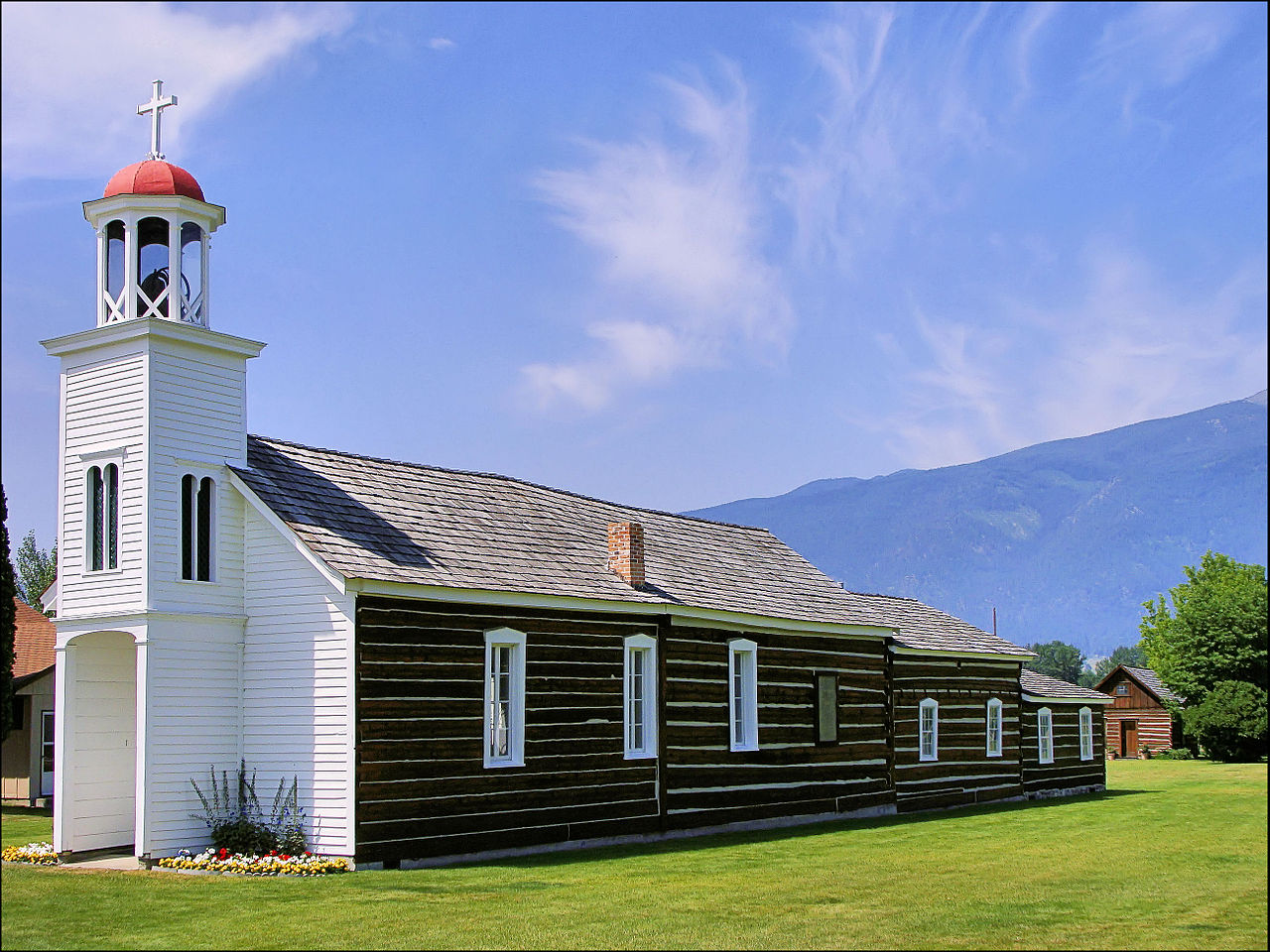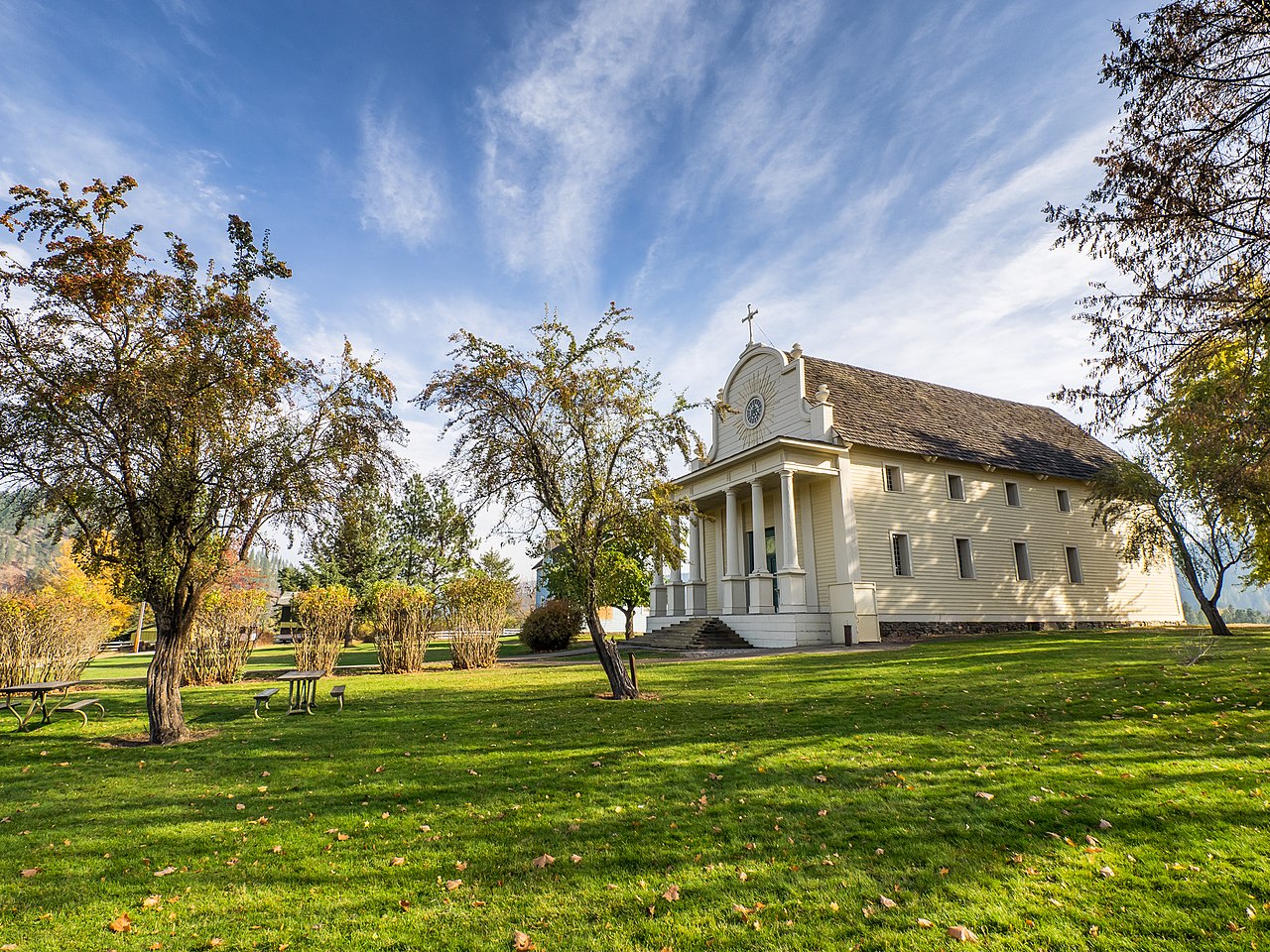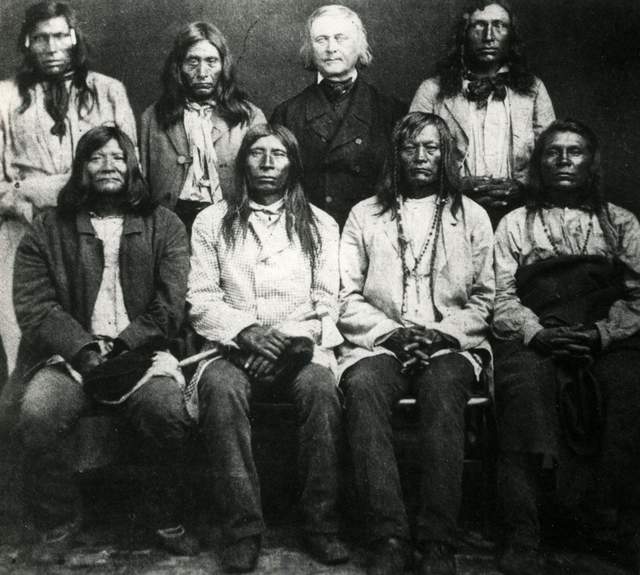
Peter John De Smet was a Catholic priest, a Jesuit missionary, a businessman, a publicist, a fundraiser, and a world traveler. For 43 years he lived in America as a missionary and supporter of the Oregon Jesuit Missions. He traveled extensively, crossing the Atlantic 19 times. It is calculated that he traveled more than 180,000 miles in his lifetime and possibly as many as 260,000. It is due to his enthusiasm, energy, writings, and fundraising that the Northwest Jesuit missions were founded and remained functioning over the following years.
The future missionary came from a family of 16 children. His father Josse De Smet was a wealthy ship-owner and merchant. Peter certainly obtained a shrewd business sense from his father. He was born on January 30, 1801 in Dendermonde, Belgium, He grew up a stocky athletic young man, with an adventurous and even reckless spirit, always taking risks such as jumping as far as possible between boats while they were docked in the harbor. His sister said he was always in trouble. They called him Samson, and Hercules. But to his credit he usually only fought to help out someone in need.

At the age 13 he went to a boarding school where his father hoped he would find discipline. Something worked, and over the years he developed a religious sense and began thinking of becoming a Trappist monk, but the quiet life of the monastery wasn’t meant for the adventurous spirit of De Smet. Instead, he met a Jesuit missionary from Kentucky and his future as the Apostle to the Rocky Mountains was set in motion.
De Smet never asked his parents for permission to leave to the United States because he knew the answer would be no. Instead he, and a few other recruits, sent farewell letters home and left to join the Society of Jesus. They departed the country on August 15, 1821, beginning their voyage on an American ship called the Columbia.
It seems that De Smet left Europe more for the adventure rather than purely religious motives. Yet, at the Jesuit novitiate near Georgetown he was remembered for his common sense, honesty, virtue, and sense of duty.
Adventure soon presented itself when he volunteered to join in founding a new novitiate at Florissant, just north of St. Louis, Missouri. His new home consisted of a crude house with no windows – just shutters – and their first school building was formerly a chicken-coop and pig-pen. They soon improved the buildings on the property, and being a muscular 210 lbs. De Smet showed himself invaluable, doing the work of three men.
As a student he not only studied philosophy and theology. He also took it upon himself to become an amateur scientist, collecting specimens of insects, plants, reptiles, and minerals. This interest in nature continued with him throughout his missionary years, obvious in his writings.
He took his first vows as a Jesuit on October 10, 1823 and was ordained a priest on September 23, 1827. Sadly, his father did not live to see his son a priest, passing just a few months before at the age of 91.
As a new priest Fr. De Smet was then sent to help found what would became the University of St. Louis. His talents began to show and his superiors sent him to Europe as a fundraiser and recruiter for more missionaries. But on this first trip home he became very sick and in 1835 left the Society of Jesus, becoming a parish priest in Belgium. Within a short time though, he regretted the decision and soon returned to America, reentering the order in 1837.
He then took up missionary work among the Potawatomi Indians at Council Bluffs, Iowa. The labor was trying, but this was what he really wanted to do. He remained there for two years when his legacy as a missionary to the Northwest began with the arrival of Indians from a remote tribe in Montana.
The Flathead Indians sent several delegations to search for Black Robes. They had learned about the Catholic Faith from Iroquois Indians who lived among them. The Iroquois leader, Old Ignatius, taught them about Jesus Christ, the cross, priests, and the Mass.

In 1831, the first delegation of four Indians arrived in St. Louis. They visited General Clark who had met the tribe during his famous Lewis and Clark expedition of 1804-1806. Afterwards they visited the Catholic church of St. Louis.
Protestant sources say that the Indians were in search of the Bible and the story of their entreaty for religion spread across East coast publications. Yet, the bishop of St. Louis writes that no one could understand their language. The Indians did, however, know how to make the sign of the cross and showed great love for the cross when shown it. Two of the Indians got dangerously sick and were baptized before dying. They received a Catholic burial in St. Louis. The other two left for home but were never heard from again.
The Protestants were the first to send missionaries. In 1834, the Methodists, Jason and Daniel Lee encountered the Flatheads, but the tribe did not welcome them. Then, in 1835 they met Marcus Whitman at Green River, but were again disappointed. The Flatheads were looking for “long black-robed priests who have no wives, who say Mass, who carry the crucifix with them.”[1]
The following delegations from the Flathead Tribe proves what they were actually looking for. Old Ignatius went with the second group in 1835 and spoke French with the Jesuits about the possibility of sending priests to the Flatheads. Old Ignatius died making a third attempt to reach St. Louis in 1837. Finally, it was the fourth delegation of 1839, led by Young Ignace that brought success upon meeting Fr. De Smet at the Potawatomi mission in Council Bluffs.
Fr. De Smet enthusiastically volunteered to go to the Rocky Mountains as a missionary. With approval, he left St. Louis on March 27, 1840 with Young Ignatius as his guide. The Jesuit marveled at the beauty of nature as he traveled west for the first time. He was pleasantly surprised to find the Flathead Indians well prepared for converting to the Catholic Faith. He shared their way of life, eating roots and wild game. He slept on buffalo hide, wrapped in a blanket. He baptized hundreds before departing to report to his superiors.
After reaching St. Louis, he then went to the East coast to collect money for the new Rocky Mountain Mission. This was the beginning of his work as a promoter of the missions.
As quickly as he could, he returned to Montana and on September 24, 1841, founded St. Mary’s Mission for the Flathead Tribe near present day Missoula. The mission was designed as a town or settlement centered around a church, similar to the 1700s era Jesuit mission settlements of Paraguay called Reductions. He hoped to change the Indian lifestyle from that of a traveling hunter-gatherer to a settler farmer.
Fr. De Smet began traveling around the Northwest, meeting various tribes, including the Coeur d’Alene Indians and founded the Sacred Heart Mission for them in 1842. This mission would flourish and eventually become the center of Jesuit missionary activity in the Northwest. The church there, which they began building in 1850, is now Idaho’s oldest building and a state park. The missionary wrote several books which made these missions known to the world.

He then made another visit to Europe where he gathered donations, returning to Oregon country with six religious sisters to help with missionary labors. They sailed back around the tip of South America on a seven month voyage. When entering the Columbia River in Oregon, their ship accidentally sailed up an uncharted channel and nearly ran aground as the water reached only nine feet deep. Fr. De Smet attributed their survival as miraculous.
During his tenure as head of the Rocky Mountain Mission, he founded several missions, including St. Mary’s Mission as previously mentioned, St. Francis Borgia mission for the Pend d’Orielles, St. Ignatius for the Kalispell Indians, St. Francis Regis, and St. Paul’s on the Columbia River at Colville, Washington.
Among his many adventures include surviving whirlpools in the Columbia River because he decided to walk along the river instead of riding the boat. Once he slept in a hollow tree with bear cubs, pulling mama bear’s tail when she tried to enter through the opening. She stayed out all night while he enjoyed a warm bed.
A swirl of accusations of mismanagement and misrepresentation of the glowing success of the missions led to Fr. De Smet’s removal from the Rocky Mountain Mission in 1846. From then on he would remain in St. Louis. In 1849, Fr. De Smet was named the Vice-Provincial and Procurator in charge of finances for the Missouri Province. Though no longer in charge of the missions, for the rest of his life he was their unofficial financial supporter. He remained Procurator of the Missouri Province until his death.

Over the years, the missionary saw the nation grow. St. Louis went from a city of 4,000 when he arrived to nearly 500,000 people when he was an old man. He watched with sadness as the white man moved into Indian lands in greater and greater numbers. This invariably led to conflict, and five times Fr. De Smet sought to bring peace among various Indian tribes and the American government. For this purpose he attended the Fort Laramie Council in 1851. A few years later, in 1859, he also helped bring peace in North Idaho and Eastern Washington. He also tried to bring peace among the Sioux and Cheyanne on separate occasions. Each time he refused to receive payment from the US government, wishing to remain independent and free to work for the good of the Indian tribes.
Under President Grant, Protestant Indian agents took over the administration of most Catholic Indian schools and missions. In Yakima, Washington, Catholic missionaries were forbidden to enter the land where they previously had a mission. It was there that a Methodist minister asked a Catholic Indian chief how much it would cost to convert to Protestantism. “A big price,” he responded. So the minister started offering $200, then $500 and $600. Each time the chief said that it was much higher. Frustrated, the minister told him to state his price. “The price of my soul,” was the answer.[2]
Whenever he returned to Europe, Fr. De Smet spread the missionary spirit, encouraging nearly 100 souls to go to America as missionaries. He also collected tens of thousands of dollars for the missions, equaling more than a million dollars in current value. With these efforts, Fr. De Smet is partially responsible for the continuance of the Rocky Mountain Mission, despite the fact that he was no longer directly connected with its administration. He even wrote more books to keep interest in the missions alive.
He made his last voyage to Europe in 1871 at the age of 70. He was getting old and even the smallest task wore him out. But he kept on working to help the missions wherever he could. Returning to America, he began writing a history of the Missouri Province but hardly got started. He passed away on May 23, 1873.
Fr. De Smet is the most famous missionary in modern American history. He lived his life working to help Native Americans. He founded the Rocky Mountain Mission for the Jesuits and established the first Jesuit missions in the Pacific Northwest. Although he spent only a few years leading it, his work at publicizing and securing financial support for it were indispensable. He was an adventurous missionary whose life became one of managing finances. He was unique. As one contemporary put it, he was “a saint, but a saint according to his own way.”[3]
Bibliography:
Carriker, Robert C. Father Peter John de Smet: Jesuit in the West. University of Oklahoma Press, 1998.
Eberlein, Jake A. Wilderness Cathedral: The Story of Idaho’s Oldest Building, 2017.
Laveille, E. The Life of Father De Smet, S.J. (1801-1873): Apostle of the Rocky Mountains. Rockford, Ill.: TAN Books and Publishers, 2000.
Raufer, Maria Ilma. Black Robes and Indians on the Last Frontier: A Story of Heroism. Bruce Publishing Company, 1966.
[1] Raufer, Black Robes and Indians on the Last Frontier, 55.
[2] Laveille, The Life of Father De Smet, S.J. (1801-1873), 367.
[3] Carriker, Father Peter John de Smet, 244.